Croatia, renowned for its world-class beaches, offers an unforgettable snorkeling experience that shouldn’t be missed. As someone who has been snorkeling Croatia since 2000, I’ve explored these waters extensively and am eager to guide you through the best snorkeling and diving spots.
Whether you’re a seasoned diver or a beginner, grab your snorkel gear and join me in discovering the rich marine life and vibrant underwater world that Croatia has to offer.
From observing a myriad of marine animals to exploring the unique diving wrecks, each snorkeling trip here promises a truly immersive experience in the Adriatic Sea.
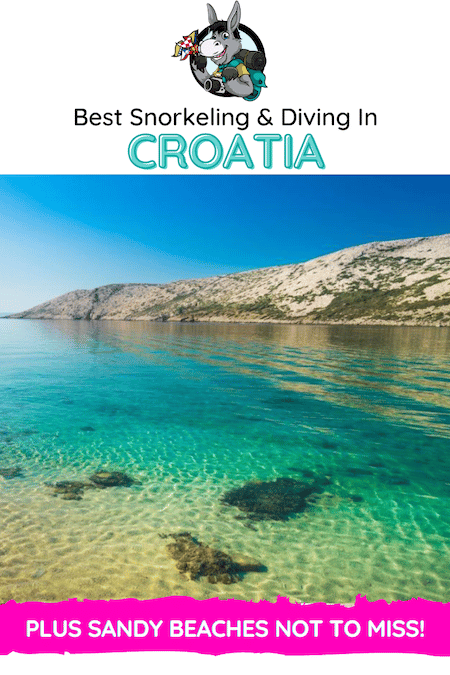
Croatia has some of the finest beaches in the world. Granted, a lot of our coast may be craggy and filled with pebbles that could be unpleasant for some (not me; I love it), but if you know where to look, you can find some of the most gorgeous sandy beaches on the planet. Furthermore, there are also some magnificent places for diving and snorkeling in Croatia.
Below is a look at a few areas you need to check out during your stay in Croatia if you are looking for some offshore adventure or sandy relaxation. And who isn’t?
Skip Ahead To My Advice Here!
Best Diving And Snorkeling In Croatia
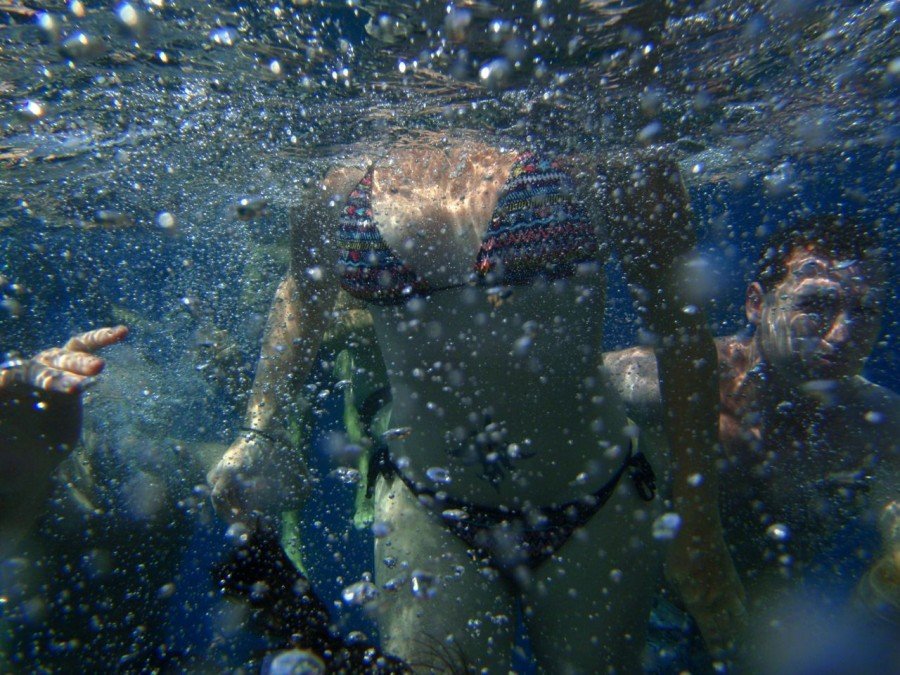
I’ll be frank: you won’t find the most amazing sea life on the planet in Croatia, as it’s certainly not a place that is full of Finding Nemo-esque creatures and massive reefs. Sorry.
What makes diving and snorkeling in the waters off the coast of Croatia so enticing are a few simple facts:
- First, there is fantastic underwater visibility. This actually makes it very easy to see what you are looking at.
- Second, you won’t find any sharks, barracuda, or other dangerous types of sea life. You will have a very relaxed diving experience.
Many of Croatia’s top spots for diving and snorkeling are the shipwrecks along the coast that have turned into underwater museums. Let’s check out a few of them in more detail.
So, while Nemo might not be gracing you with his presence, you will be able to see dolphins, squid, crabs, jellyfish, octopi, starfish, cuttlefish, fan mussels, sea bream, and sea bass, moray eels, sardines, scorpionfish, sponges, and many sea cucumbers.
Of course, much of Croatia’s diverse marine life is protected, so never be tempted to catch or remove anything to take home.
Anyone who wants to fish in these waters needs to get a permit from the authorities beforehand, and there are many rules about what you can and can’t catch. Instead, view the beauty of the underwater world and let them be.
What Lies Beneath The Sea In Croatia
Of course, there is rich marine life in Croatia’s waters, but it’s not just about that, as you’ll discover abundant underwater caves, shipwrecks, and ruins.
If you want to check out the best sites, you’ll need to be able to scuba dive, but there are also some shallow wrecks available throughout the country that you can see without having to venture too far down. We’ve covered some of those later in this article.
You’ll also see sea caves, and many are accessible.
Shipwreck Diving & Snorkeling
1. Baron Gautsch Shipwreck
This passenger ship is some 90 meters long and is located close to Pula. The ship met its watery fate when it hit a minefield in 1908 and is now a favorite among both tourists and veteran divers.
2. Giuseppe Dezza Shipwreck
This former Italian military vessel was bombed by a British plane in 1944. Both halves of this ship are accessible thanks to the bomb that split her in two. It is located near Pula.
3. Shipwrecks Of The Reformer, Hans Schmidt, John Gilmore, Flamingo, Coriolanus, And Varse
These ships are all accessible through the Hippocampus Diving Centre located in Pula. These ships contain everything from Italian warships to Shakespeare-class British Navy vessels. They are great spots to view local fish and other underwater sea creatures, and their accessibility makes them popular with first-time divers. Because of the abundant species of aquatic life, they’re a hotspot for diving pros, too.

4. Brijuni Islands Steamship Wreck
A strong storm in 1930 ended the marine life of this World War One vessel. Experienced divers should be sure to view the enormous propeller. You can find her sleeping on the seafloor off the south coast of the island of Vis.
5. Peltastis
This Greek cargo ship was the victim of another Adriatic storm in the Kvarner region. Resting near the island of Krk, she is a favorite among first-time divers.
6. Pajo And Ribolovac
Accessible through a bunch of diving centers, these two former fishing vessels are great underwater relics. They are located near the fantastic tourist destinations of Čiovo and Šolta and are the perfect way to spend a sunny, cloudless afternoon.
7. Taranto
Another Italian navy ship sunk by a mine during World War II, Taranto, lies near Dubrovnik and sits on the nearby reefs. As such, many schools of fish are found continuously swimming in and around this massive structure.
Marine Life Diving & Snorkeling
8. Rasip, Kornati Islands
The Kornati Islands themselves are stunningly beautiful, but as you head to the south, you will find the diving site of Rasip. This deep wall drops to around 65 meters and is packed with various brightly colored sponges, corals, and a huge range of different types of fish.
9. Raznjic, Korcula Island
You’ll see huge cliffs and an impossibly blue sea in the easternmost part of the island. This is an excellent spot for diving and snorkeling; however, be careful during shoulder seasons, as the wind can whip up out of nowhere and be a little dangerous. This area is unsheltered, so checking the weather is a must.
10. Proizd, Korcula Island
This spot is excellent for beginner snorkellers because the waters aren’t too deep here. The water currents can be strong, but this doesn’t happen often. Visibility is perfect here, no matter what the month.
11. Sveta Marija, Mljet
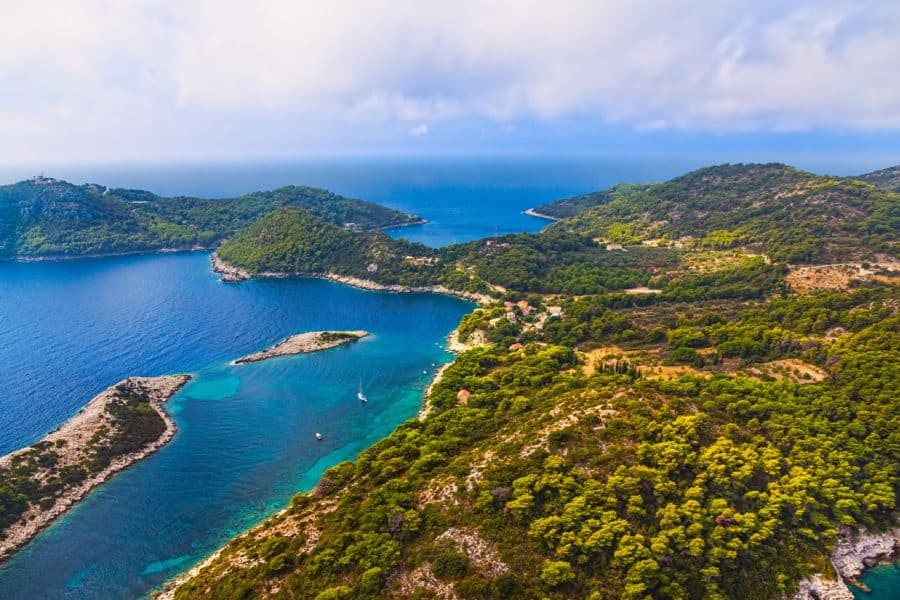
Located in the Mljet National Park, this spot has plenty of vibrant and abundant marine life. The park is protected, so there is excellent visibility and lots to see. It’s also very easy to get to, with regular ferries from Dubrovnik, followed by a small boat to the park.
12. Danče, Dubrovnik
If you don’t want to venture too far away from your base and happen to be in Dubrovnik, this is a convenient place to head. The water visibility is excellent, and plenty of fish species can be spotted.
13. Rasoha, Loviste
Right at the end of the Peljesac peninsula, you’ll find this beautifully natural place, isolated from any crowds. You may experience strong currents here, so be wary, but staying close to the land should solve that problem. This is really only a snorkeling spot for the experienced who don’t mind venturing a little off-track, but it is gratifying.
14. Gavranišće, Rab

This is a sheltered, clean, and beautiful place to snorkel and relatively easy to get to from Kampor and then a short walk. Visibility here is always good, and many species of marine life are available.
15. Tarsce, Sveti Klement, Hvar
This is a small bay that sits close to Hvar. It’s a quiet spot, and you’ll need to take a taxi boat and walk a little way to reach it, but it’s worthwhile. Winds can be pretty strong, so check the weather beforehand, but it’s possible to snorkel here all year round with excellent visibility.
16. Margarina Reef, Susak
Less experienced divers will find this the place to be. Located close to Losinj, the reef is very shallow, at just 5 meters of the sea. However, a deeper canyon goes down to 17 meters, so don’t venture too far out if you’re not the best swimmer.
Brands We Use And Trust
Underwater Cave Diving & Snorkeling
Do you want to find something a bit more adventurous to explore? Let’s find a dark cave to get you in, huh?
17. Premuda
Just west of Pag lies the island of Premuda, with its underwater ‘cathedral.’ As the light shimmers into the holes and the inner cave, some say it appears like a stained-glass window and a deeper wreck (at 67 meters).
18. Bisevo Grotto/Blue Grotto
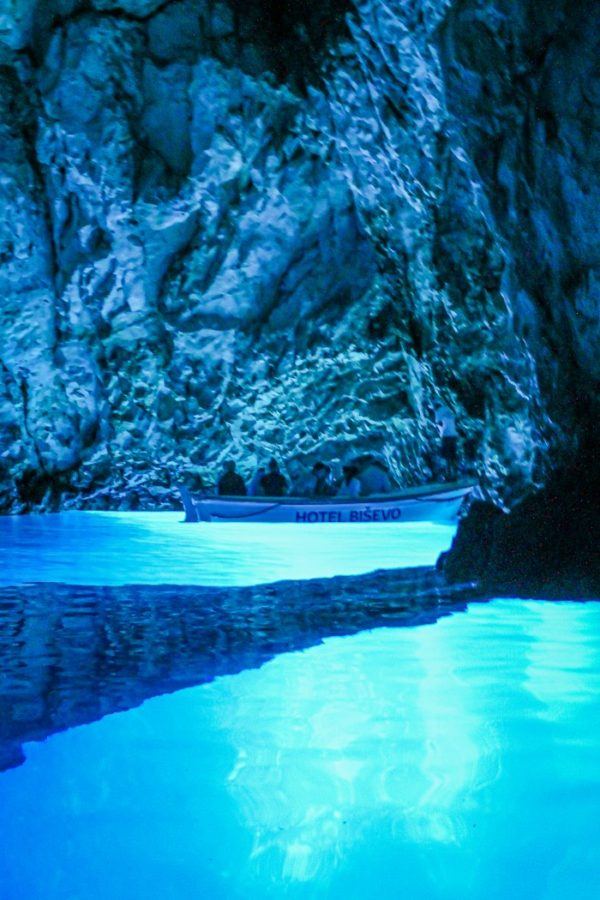
Located close to Vis Island, you will find the Blue Grotto, one of the most popular sites. You will enter the chamber and dive down further, taking you to a wall lined with sponges, small caves, and countless varieties of fish.
19. Lucice Bay, Brac
Here, you will find a huge underwater cave packed with stalagmites, stalactites, and various corals and sponges. One cave is 37 meters long, and the other is 42 meters long, so take your pick!
20. Odisej Cave, Mljet Island
Just outside the protected park, you’ll find Odisej Cave, an ideal place for those who are pretty experienced in snorkeling. You can go into the cave if you want to or stay outside. The water here is deep, and you’ll see some an abundance of marine life as a result.
Best Islands For A Diving & Snorkeling Holiday
Krk
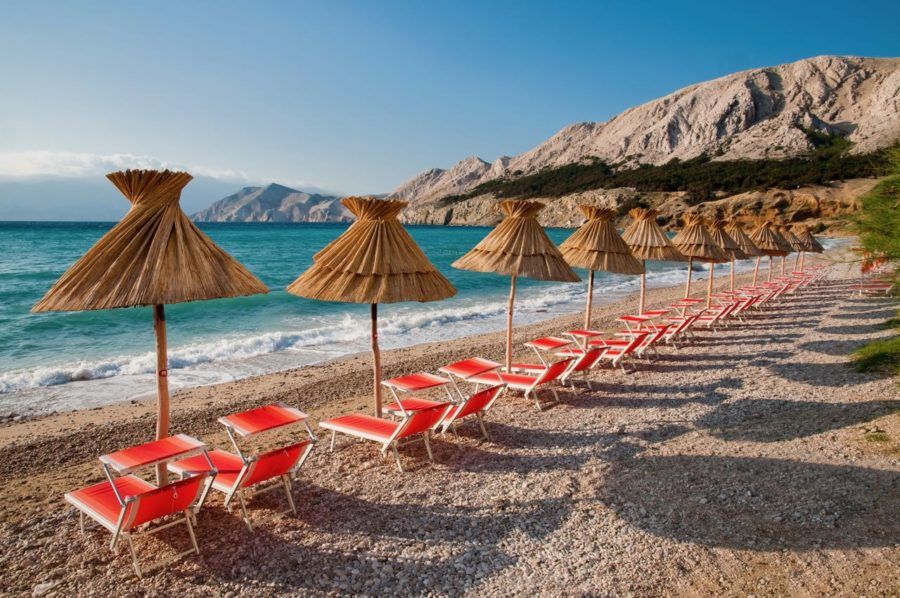
One of the most popular dive centers is located in Krk, with around 30 different dive spots to explore. This is why Krk is a very popular location for avid scuba divers and snorkelers.
You need to have basic scuba certification and should check what requirements or regulations are required by the dive center, but beyond that, be prepared to have a day of fun! Here, you can explore some of Croatia’s oldest underwater artifacts, and with so many dive sites, it might be hard to choose!
Hvar
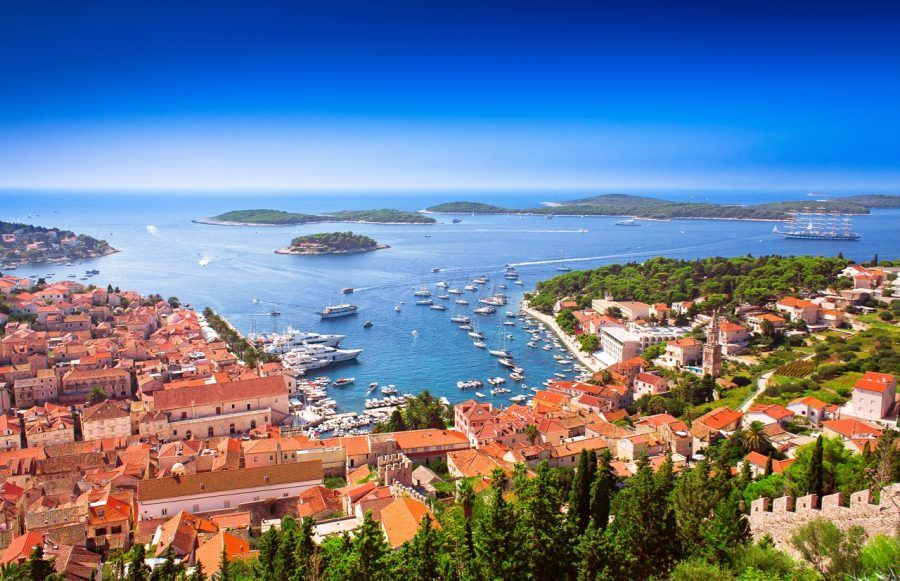
The island of Hvar is both a popular dive site and a tourist hotspot on land. Here, you can explore many of Croatia’s natural wonders, as well as the 15 marked diving spots that are less than an hour’s ride from the diving base itself. This means you get a full day of scuba activity and underwater exploration.
Check out our favorite places to stay on Hvar Island here!
Is Diving & Snorkelling In Croatia Safe?
The clear visibility around Croatia’s waters means that it’s a relatively safe activity to enjoy, and it’s rare to encounter any animal attack.
It’s possible that you may see the odd jellyfish towards the shoreline. Still, these don’t tend to sting, and it’s further into deeper water where you may visit the more dangerous types, including the mauve stinger or Pelagia noctiluca.
This type of jellyfish is quite large and purple in color with long tentacles. This jellyfish sting isn’t fatal or particularly serious, but it will cause considerable pain.
Sea urchins are the only other type of sea animal to be aware of. They won’t hurt you, but it won’t be pleasant if you stand on one. For that reason, always wear sea shoes.
The Adriatic isn’t a particularly ‘wavy’ sea, but if there has been a storm or one brewing, you might notice it is choppy than usual. In that case, keep an eye on weather reports; Croatia is known for being quite windy, and while it doesn’t often ‘whip up’ large waves, it’s best to head out at a calmer time.
The final point? Rocks. Most of Croatia’s beaches are rocky, meaning underwater, you may come across some quite sharp-edged rocks. Be aware of your surroundings at all times.
When Is The Best Time To Go Snorkeling Or Diving In Croatia?
It’s possible to snorkel and dive at any time of the year if you have the right equipment, but the optimal conditions are between June and the first week of October. This is when the sea is warmest and at its calmest.
The sea will be extremely warm between July and August, which is the best time for snorkeling in shallow waters. However, this is also when other people want to snorkel and dive, so that you may notice crowds.
September is an enjoyable time of year, with slightly cooler temperatures, fewer crowds, and more chilled-out snorkeling and diving.
Best Sandy Beaches In Croatia
Aside from popular Dubrovnik, the Adriatic coastline is teeming with fantastic beaches to enjoy, no matter who you’re traveling with, when you’re going, and what you’re going for. But, if you’re traveling with kids in Croatia, there’s no denying that building a sandcastle or two is the ideal pastime; for that, you need sand; pebbles don’t do the job!
If you’re looking for fun sandy beaches in Croatia, here is a complete list. But below are a few to get you started.
Lopar Beach, Island Of Rab
Situated on Rab’s beautiful island, just off the north coast of the mainland, you will find Lopar Beach. This is a popular choice, especially during the peak summer months of July and August, when you will find crowds in abundance. This shouldn’t put you off; you will find your spot on the fine, white sand if you get there early enough.
Bačvice Beach, Split
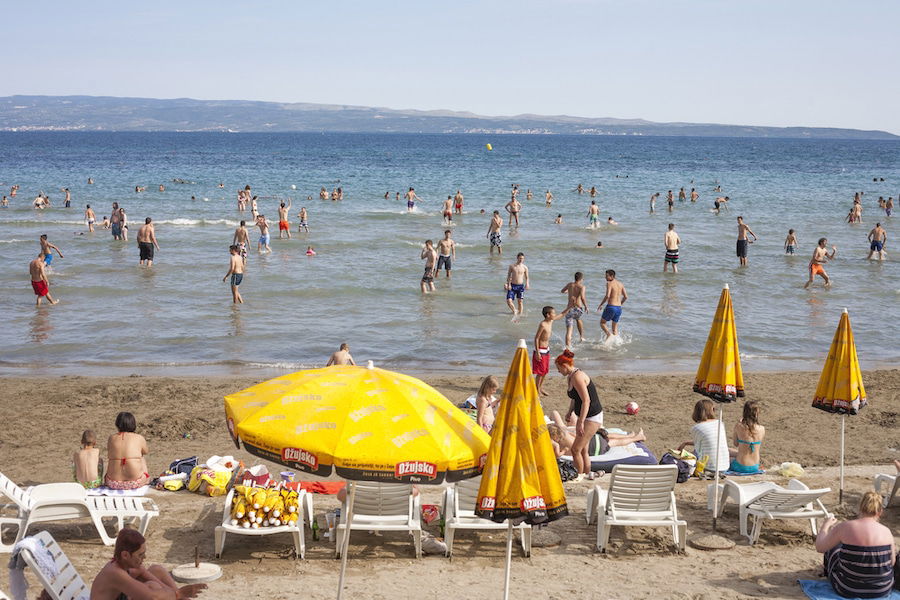
One of Croatia’s most well-known beaches is in Split’s city center.
Grebisce Beach, Hvar Island
Hvar’s best sandy beach for families is Grebisce, located on the north side of Jelsa Harbor.
Vela Przina Beach, Korčula
The only problem with famous beaches is that they tend to get a little crowded during the peak months. The answer? Simple, really, get there early enough and make a day of it.
Sakarun Beach, Dugi Otok
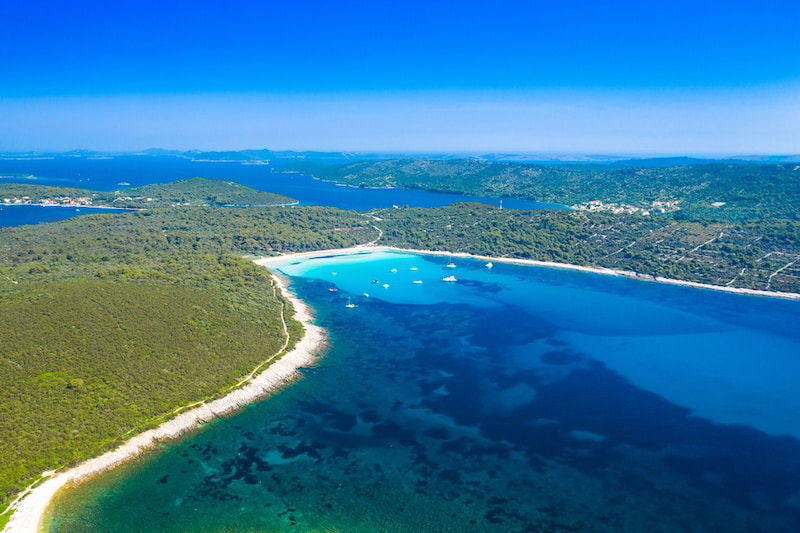
If you’re looking for a beach that looks like paradise, your search is now over! Clear, calm water without major crowds makes a perfect family choice. The smaller beaches and bays around Sakarun are fun to explore with the family. This is one of the most famous beaches on Dugi Otok and in the Zadar Region.
Saplunara Beach, Mljet
This is undoubtedly a hidden gem! Many of Croatia’s beaches are slowly succumbing to mass tourism. However, this one has managed to remain totally untouched.
Velika Plaza, Omiš
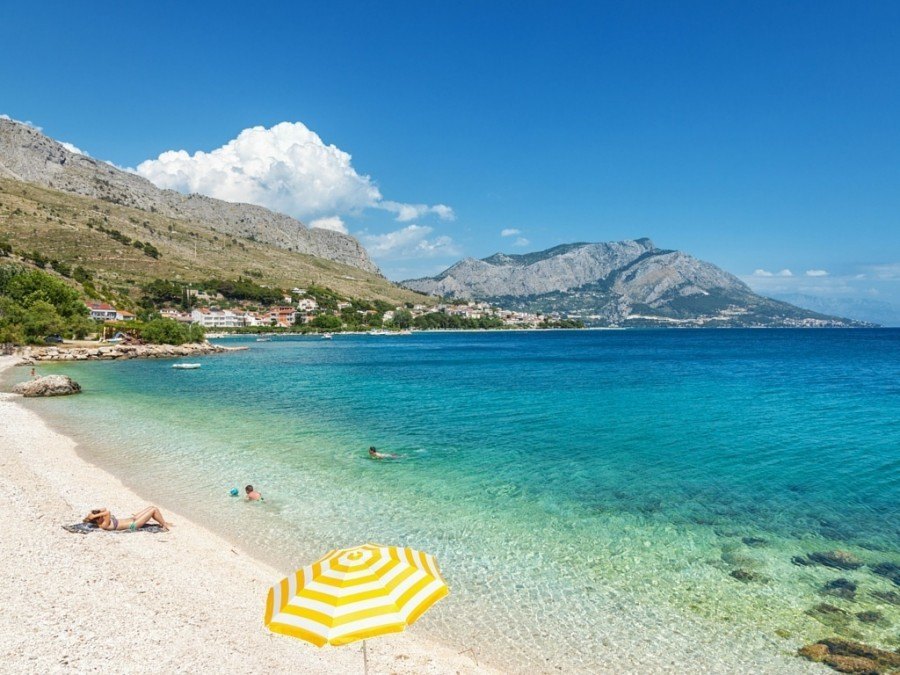
Omiš is a large town with several sandy beaches to choose from, yet Velika Plaza is the main beach in the city, making it the easiest to get to and the largest.
Bay Lovrečina, Brač
Tucked along the island of Brač’s northern shores, you will find a little cove known as Bay Lovrečina. Here, waters are shallow, azure, and clear, the sun is plentiful, and nearby pines provide shade. We suggest you try your hand at Picigin. It’s an ideal location for this traditional Croatian water game!
Queens Beach, Nin
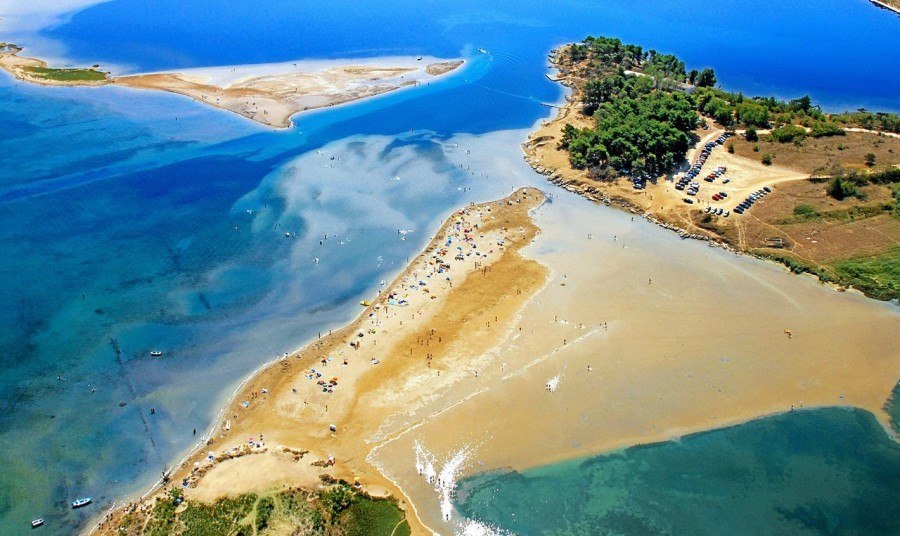
There are many sandy beaches in the Zadar-Nin area, but this one is probably the best. The waters around this beach change regularly, depending on the wind and weather, which makes for a fantastic sandcastle building! There is also plenty of room for running free in total safety, which is always a must when you’re having a family beach day.
Best Hidden Beach Gems In Croatia
Of course, there are all of the obvious places to visit in Croatia, all of those well-known beaches, but let’s try to find a little less frequented place.
For Camping Lovers: Camping Sumini
This area on the island of Pag is lined with oleander, oak, and laurel trees and lies right on the Adriatic coast. It is a decidedly unique Mediterranean experience, where you can pitch your tent (camper or caravan) among the 35 hectares of trees and spend a night listening to the sound of the waves rolling in. Heaven indeed!
The scenery here is breathtaking, making it one of the best places to catch some rays or hide in the shade if the sun gets too hot.
For Sports Lovers: Nin

Nin is home to soft sand that stretches as far as the eye can see and many great spots for SUP and kite surfing, including a kite surfing school.
You’ll also find people smearing themselves with thick black sludge located close to the water. You might wonder why, but this area is home to magical mud! Yes, you read that correctly. Ideal for curing sore joints and muscles, the mud typical of this area is an effective alternative remedy for muscle pain. Try it yourself if your arms get sore from a day of SUPing.
For Families: Spiaza, Susak
This tiny island is composed of sand. By that, I mean it looks like it is almost entirely nothing but sand. Spiaza is a short ferry ride from the nearest town, and the main beach is crescent-shaped and stretches out from the village.
The beach boasts a very shallow bay; you must walk out just over 500 meters to find water deep enough to swim in. This makes it a perfect location for children.
You will have no worries as your kids splash around in the bay’s shallow waters. Also, if you travel a little further to the east, it is much less crowded. The only drawback is walking around some rocks to get there. However, if you are up for the challenge, you can have a beach that is almost all yours.
Which are the best snorkeling spots in Croatia?
Croatia offers several fantastic snorkeling spots. Some of the top locations include the Blue Cave on Biševo Island, the Pakleni Islands near Hvar, and the crystal-clear waters of the Kornati National Park.
What is the best time for snorkeling in Croatia?
The best time for snorkeling in Croatia is during the summer months, from June to September. The weather is warm, and the sea conditions are generally calm, providing excellent visibility for snorkelers.
Do I need to bring my own snorkeling gear to Croatia?
While some tour operators and beachside shops may provide snorkeling gear for rent, it’s best to bring your own snorkel, mask, and fins for a more comfortable and hygienic experience.
Are there any snorkeling restrictions in Croatia?
Yes, some snorkeling areas in Croatia might have restrictions in place to protect marine life and underwater ecosystems. Always check for any guidelines or rules before entering the water.
Can I see marine life while snorkeling in Croatia?
Absolutely! Croatia’s waters are teeming with marine life. Snorkelers may spot colorful fish, sea turtles, and various species of starfish and even encounter friendly dolphins in some areas.
Does Croatia have guided snorkeling tours available?
Yes, many coastal towns in Croatia offer guided snorkeling tours led by experienced instructors. These tours can take you to the best snorkeling spots and ensure your safety while exploring the underwater world.
What are some other water activities I can enjoy in Croatia?
In addition to snorkeling, Croatia offers a wide range of water activities, including scuba diving, sea kayaking, paddleboarding, and boat tours to explore the stunning Adriatic Sea coastline.
Are there family-friendly snorkeling options in Croatia?
There are family-friendly snorkeling options in Croatia, particularly in shallow and calm waters. Some beaches and coves are ideal for children to enjoy snorkeling safely.
What do you think? Ready to plunge into Croatia’s crystal clear waters for a snorkeling adventure? Whether you’re an experienced snorkeler or just starting out, the Makarska Riviera, Cape Kamenjak, and Brijuni National Park are great places to explore.
With destinations like the Green Cave and Bisevo Island, each spot offers a unique opportunity to witness natural beauty and rich history. From the turquoise waters of the Blue Lagoon to the hidden caves around Skrivena Luka, these locations boast excellent visibility, abundant marine life, and natural habitats waiting to be explored.
So, why wait? Join me for a snorkeling journey through Croatia’s beautiful beaches and archaeological sites, or take a short boat ride for a unique experience in deeper waters. Let’s discover the best spots for an unforgettable snorkeling adventure in my dear homeland – Croatia!

